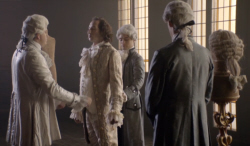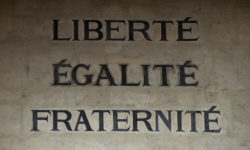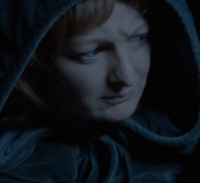French Revolution
King Louis XVI - Napoleon Bonaparte
Andrew Marr’s History of the World - Age of Revolution

Back in Europe, France’s Louis XVI, not perhaps the brightest candle in the candelabra, had paid a fortune to help the Americans win their revolution against his old enemy, the British. The result? The financial collapse of Louis’ already tottering regime. And it seems not to have occurred to him that ideas of liberty might boomerang back from America to Paris.
France was almost bankrupt. But the people who mostly had the money - the nobility and the Church - mostly didn’t pay tax. And so, in desperation, Louis summoned representatives of the common people of France to help him. Big mistake. Because for the first time, the seething and put-upon majority had a voice.
In the summer of 1789, simmering anger and resentment exploded into full-blown class war on the streets of Paris. On 14 July, hundreds marched on a hated symbol of royal power - a fortress and prison called the Bastille.
The Bastille had just seven prisoners inside, none political. The crowd really wanted it’s store of gunpowder. The besiegers cut off the governor’s head with a pocket knife and paraded it through the streets.
Liberte, egalite, fraternite

This was much more than simply a mob. The French Revolution would be led by shopkeepers, journalists and lawyers. And they were armed with something much more dangerous than gunpowder or pikes - the ideas of the Enlightenment.
The leaders of this popular revolt had genuinely revolutionary ideas. Very quickly, they abolished all the privileges of the aristocracy. They insisted on fair taxes, and they took on the incredibly wealthy and powerful Catholic Church. Above all, they declared the rights of man - the equality of all citizens, their right to an elected government, free speech and fair courts.
These were the ideals of the early French Revolution. Liberte, egalite, fraternite. Louis XVI was now in full retreat. But his position wasn’t hopeless. France was surrounded by other absolute rulers with armies who might come to his rescue.

King Louis decided to escape with his spectacularly unpopular Queen, Marie Antoinette. On the night of 21st June 1791, the Royal family sneaked away from Paris, disguised, not very well, as servants, and they fled for the border. It should have been easy. This was a world where few faces where recognisable. But just 40 miles from the border, the local postmaster who’d served in the Royal Cavalry recognised the Queen.
He checked his money, and there was the King’s face on a banknote. The King and his family were taken back to Paris in disgrace. The shift from absolute power to absolute irrelevance was complete. From now on, the King was a pathetic figure. In September 1792, France declared herself a republic, and that winter, Louis was put on trial for treason. As to the result, there was never any doubt. On January 21, 1793, at nine o’clock in the morning, Louis XVI was driven through the streets of Paris… to meet his sharpest critic so far.
The Guillotine

The guillotine had only been at work here for nine months. It was itself a product of the ideals of the revolution - humane, efficient and fast. It was promoted, not invented, by Dr Joseph Guillotin. “Now, with my machine,” he said, “I can cut off your head in the twinkling of an eye, and you’ll never feel it.”.
It was also supremely democratic, killing both commoners and nobility in just the same way. Now this democratic killing machine was about to slice away 1,000 years of French monarchy.
King Louis XVI announced his innocence and forgave his enemies. But he could have saved his breath.
The execution of King Louis XVI horrified the monarchies of Europe, and soon France was encircled by hostile armies. At home, food prices soared, the mob rioted, and in the Assembly, the factions fought each other. The moderates sat on the right-hand side of the chamber and the extremists on the left, which is where today we get our words for left and right from in politics. Finally, in the summer of 1793, the extreme Jacobin faction seized control. The revolution descended into terror. It was driven by a naive idea that mankind could start again… and slice its way to a better world.
The extremists turned the high ideals of the revolution into a weapon to destroy their enemies. One lot of revolutionaries denounced the next. Instead of the reign of reason, it felt like the reign of hysteria and paranoia. All around Paris, people were waiting for the knock on the door, and the streets of the city ran with blood. It’s thought that 40,000 people died in what became known simply as The Terror.
Napoleon Bonaparte

Finally, in 1799, the Army seized control of the country. The leader was an upstart general called Napoleon Bonaparte. His ambition, limitless. In 1804, he invited the Pope to anoint him Emperor of France in an extravagant ceremony in Notre Dame Cathedral.
Napoleon left the Pope waiting in the cold for several hours… before crowning himself. In history, the arrival of a small man in a big hat is rarely good news. Absolute power was back.
With the crowning of Napoleon, the revolution was over. The world’s seen many revolutions since then, and they have often followed just the same pattern - idealism, then extremism, the revolution starts to eat its own children, until finally, in exhaustion, power lands in the hands of the military hardmen.
And yet, despite that ghastly cycle, the revolutions keep coming, often driven by just the same ideals as that first revolution, made and then killed by the people of Paris.
